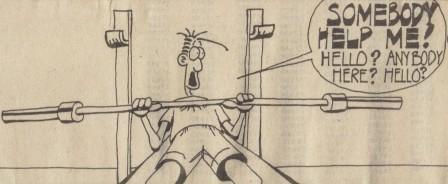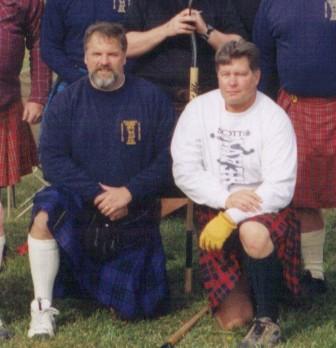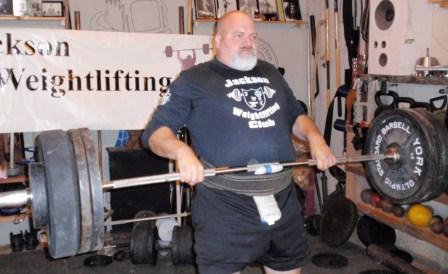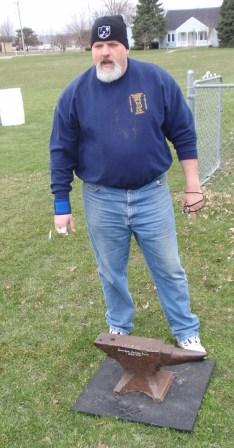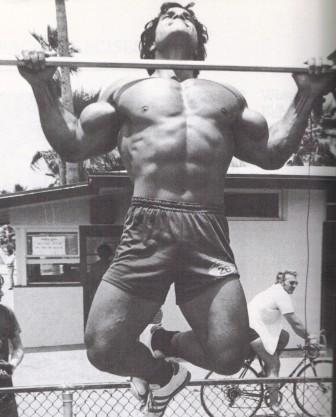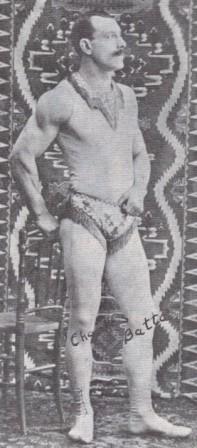History of Formulas used in the USAWA
by Al Myers
This past week on the USAWA Discussion Forum a lively debate got started on the fairness of using Formulas in comparing athletes for overall placings. The USAWA is unique in doing this compared to other lifting organizations which prefer to just give awards for different divisions or classes. Sure these other organizations might use a Formula to award a Best Lifter, but the USAWA uses a formula to determine the overall ranking of every athlete in the competition, from the top to the bottom. No OTHER organization does this!! We now use the Lynch Formula to make the “handicap” adjustment for bodyweight differences and use a Age Allowance Percentage for Junior Lifters and Lifters age 40 and above. I am NOT going to give my viewpoint and opinion on the fairness of using formulas in this article, as that is better left for the Discussion Forum. Instead, I would like to review the history of formulas used in the USAWA, and give insight to how these different formulas were derived.
The main All-Round competitions that occurred prior to the USAWA (1987) were “odd lift” meets promoted by Bill Clark out of Missouri. These meets were contested under the direction of the Missouri Valley Weightlifting Federation, the Region IV division of the USWF. The formula used at that time to determine rankings was the Schwartz Formula. Numerous old Zercher Meet results verified this. The USAWA really began in the summer of 1987, with the first official records recorded for the USAWA in the fall of 1987. At this point the USAWA adopted the use of the O’Carroll Formula for bodyweight adjustment and it was used extensively in the USAWA in 1988. The Zercher Meet in 1988 used the O’Carroll Formula. The National Masters Weightlifting Program started using the Sinclair Formula at this time, and even used a unique formula developed by Joe McCoy that adjusts for bodyweight AND age at the 1987 National Masters Olympic Lifting Championships directed by USAWA Hall of Famer John Vernacchio. It was called the Sinclair-McCoy Formula and ONLY applied to Olympic Lifting totals. The FIRST USAWA National Championships directed by John Vernacchio in 1988 used the O’Carroll Formula. I did find a few old USAWA meet results from the late 80’s where the Sinclair Formula was used for All-Round Meets. The Sinclair Formula was developed by Canadian mathematician/weightlifting enthusiast Roy Sinclair. He used the weightlifting results from the Olympics as his data base to determine the coefficients for his formula. Another interesting formula brought forth from the IAWA in the early 90’s was the Blindt Formula, developed by British lifter Adrian Blindt. It didn’t correct for bodyweight, but for the lifts involved. Each lift had its own factor. The idea was this would make it more fair, in example, to compare a lift where lots of weight can be lifted, like a Hip Lift to a lift where much less weight is lifted, like a Press. This formula was never used in the USAWA, but was used in some IAWA competitions. I remember it was used in the IAWA World Postal Meets promoted by the Australians a few years back.
However, by the early 1990’s most all USAWA results started using the Lynch Formula, which we still use today. The Lynch Formula was developed in 1988 by Ian Lynch, a lifter from England. The Lynch Factors (or coefficients) have not changed since its inception. I know this because I found an old Lynch Chart from the early 90’s and compared it to today’s Lynch Chart and it’s the same. No updates and no modifications. Recently, we have been faced with a problem using the Lynch Formula, and that problem is the highest bodyweight factor on the Lynch Chart is 150 kilograms. It is not uncommon nowadays to get a lifter that weighs over 330 pounds, and we have no way to correct for them! In the past when this happened the meet director would either “estimate” a Lynch Factor for them or just give the athlete the highest bodyweight correction on the chart. I don’t think EITHER of those solutions are acceptable – and thus I began to try to find the “original Lynch Formula” so the chart could be extended for higher bodyweights. I inquired several places and couldn’t find any leads. Finally, thanks to Tom Ryan and our IAWA President Steve Gardner, Ian Lynch was located and I could go right to the source of the Lynch Formula! Unfortunately, the exact formula and method of reproducing it has been lost. However, Ian Lynch was very helpful in sharing some details and information on why the Lynch Formula was developed and used in All-Round Weightlifting. The Lynch Formula is very similar to the O’Carroll Formula with the differences being that the Lynch Formula is slightly more favorable for lighter lifters. In a sense, it “leveled out the curve” on the light end of the O’Carroll Formula. Both the Lynch and O’Carroll Formulas were derived using body factors whereas the Schwartz and Sinclair Formulas are based on Olympic lifting performances or World Records for Olympic Lifting. I think this makes the Lynch Formula more applicable to All-Round Weightlifting. It sure doesn’t make sense to me to use a formula based on the two Olympic Lifts, and then expect it to correlate to over the 200 lifts we do in All-Round Weightlifting! Ian Lynch had this to say about the development of the Lynch Formula from the O’Carroll Formula considering body factors , ” The O’Carroll Formula assumed all lifters non-muscular weight was constant, ie bones etc. That didn’t work well particularly for lighter lifters.” That must have been the reason for the points being adjusted slightly in favor of lighter lifters.
Just out of curiosity I “recalculated” the results of last year’s World Championships using the Sinclair and O’Carroll Formulas. This is how it would change “the top ten”:
| Lifter | BWT | Lynch Pts. | Sinclair Pts. | O’Carroll Pts. |
| Mark Haydock | 122.9 | 764.3 | 1005.2 | 771.1 |
| Al Myers | 114.7 | 763.1 | 978.5 | 768.6 |
| Chad Ullom | 104.3 | 749.8 | 936.2 | 758.9 |
| Roger Davis | 81.6 | 736.6 | 896.9 | 737.0 |
| Denny Habecker | 86.1 | 661.1 | 805.3 | 661.9 |
| John Monk | 79.8 | 658.3 | 802.1 | 658.4 |
| Bill Spayd | 107.9 | 655.3 | 825.0 | 659.1 |
| Scott Schmidt | 119.7 | 598.6 | 779.3 | 603.6 |
| Art Montini | 78.2 | 588.9 | 718.3 | 589.1 |
| Josh Haydock | 66.9 | 582.2 | 724.6 | 565.7 |
This group of lifters make up an interesting data base for this comparison, because lifters of different body weights are represented (from 66.9 kgs to 122.9 kgs). Not much changes in the placings between the three formulas being applied except for Bill Spayd. He placed 7th overall using the Lynch Formula, but would have been 5th using the Sinclair Formula. You can really see how the Lynch Formula favors lighter lifters compared to the O’Carroll Formula. Just compare Mark Haydock (at 122.9 kgs) to Josh Haydock (at 66.9 kgs). Mark’s Lynch Points are LOWER than his O’Carroll Points while Josh’s Lynch Points are MORE than his O’Carroll Points. John Monk, at 80 kilograms, has the bodyweight that gives the same points using both the Lynch Formula and the O’Carroll Formula. The Sinclair Formula MUCH favors heavier lifters. Just look at the top four placings where the bodyweights of the lifters decrease with each placing. It is pretty close using the Lynch Formula, but with the Sinclair Formula the point gap widens much more with each subsequent placing.
This doesn’t answer the long debated notion that “formulas are not fair”, but I hope that it provides some insight to how the formulas work and why we use them in the USAWA.
